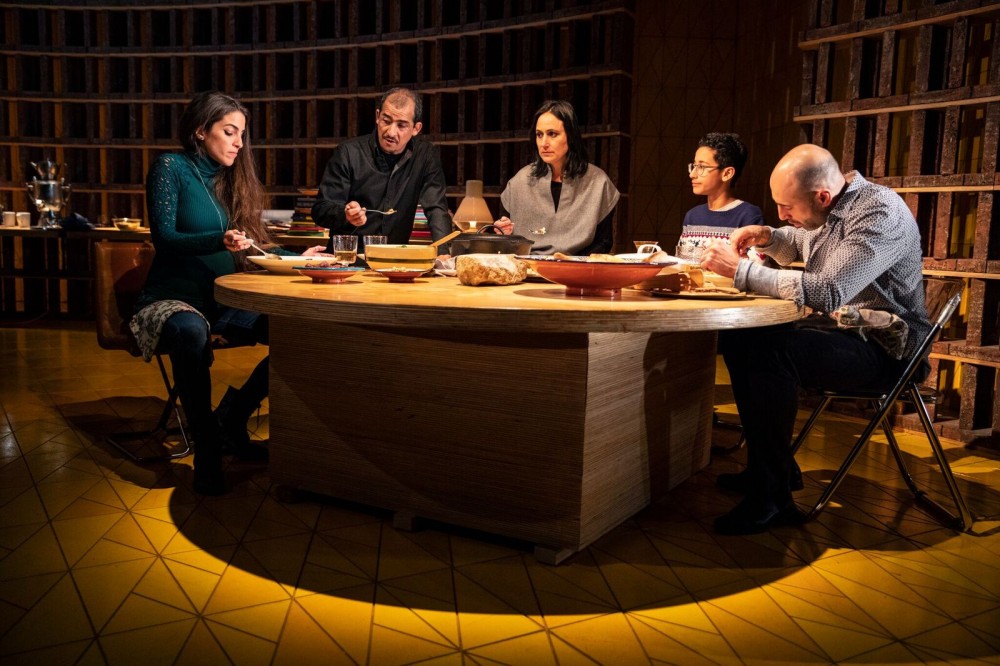

by Beatrice Williams-Rude
Gracing the theater scene is an elegant and utterly delightful new production of George Bernard Shaw’s Widowers’ Houses. Guiding the effort is Shaw authority and aficionado David Staller, whose Project Shaw has been presenting staged readings of works by GBS monthly for more than a decade.
From the opening tableau in which the cast is shown in situ, beautifully dressed in period costumes (circa 1900) with charming piano music in the background, we’re given eye candy while our ears and brains get the meatier menu. Shaw’s works are for listening and thinking. Sometimes they “read” better than they “play,” which gets us to the special brilliance of director David Staller, who makes them work theatrically. Shaw’s wicked wit, irony, unblinking examination of the human condition and the insights gained are all brought to the fore.
Widowers’ Houses is Shaw’s first play and follows his successful career as journalist and music critic. The plot concerns an upstanding, aristocratic young man—who’s a second son and thus without means—who becomes a doctor. On a trip abroad following graduation, he meets and falls in love with the daughter of Sartorius, an immensely wealthy man.


After all the arrangements are made for the couple’s betrothal, the young man, Dr. Harry Trench, discovers the source of Sartorius’s wealth: his father-in-law to be is a slumlord. Horrified, he decides that he will accept no money from Sartorius and asks bride-to-be Blanche to do likewise. Blanche is revealed to be greedy, more loving of money than of her fiancé. She refuses and the engagement is called off.
Then it’s revealed that Harry’s meager income is derived from interest on a mortgage on one of the properties owned by Sartorius. Hence the title of David Staller’s essay in the program, which comes from a line from the play about people who live in glass houses—as many of us do without even being aware of it.
Widowers’ Houses was produced by TACT—Scott Alan Evans, Artistic & Executive Director and Nora Chester, Associate Artistic Director—in partnership with the Gingold Theatrical Group, David Staller, Founding Artistic Director.
The lovely set was designed by Brian Prather, lighting by Peter West. Special kudos for Toby Jaguar Algya, sound designer, who kept the level just right. We could hear and understand every word—essential for GBS plays—and under whose purview the choice and execution of the particularly appropriate piano music falls.
Sartorius is splendidly played by Terry Layman; Lickcheese, who rises from groveling rent collector to arrogant businessman, is meticulously portrayed by John Plumpsis; and in arguably the juiciest role in the play, William De Burgh Cokane, the embodiment of manners over morals—the man who just wants everything on the surface to be “civilized” and who delights in using French phrases, however badly—Jonathan Hadley is nigh on perfect.
The young lovers, Dr. Harry Trench and Blanche Sartorious, are well played by Jeremy Beck and Talene Monahon. And Hanna Cheek is delightful as first a German waitress, and then an English lady’s maid.


By the time they’re to be married, the young doctor, having sadly concluded that he’s no better than Blanche’s father, the couple’s relationship is more a business arrangement than loving liaison.
When David Staller initiated Project Shaw he noted that we need GBS—we need unvarnished truth. TV ushered in what was supposed to be the “information age.” But we’re now in the disinformation age, and have been since well before Staller launched his endeavor. Yes, GBS was a cynic, as cynical as only a continuously disappointed romantic can be.
“Behind every great fortune lies a great crime.” No, these are not the words of Bernie Sanders, although it’s logical to think so; and they’re not from the pen of GBS, although much of his work reflects them. The quote is Balzac’s (1799-1850).
Plus ça change, plus c’est la même chose.
Widowers’ Houses. Through April 2 at the Beckett Theatre, on Theatre Row (410 West 42nd Street, between Ninth Avenue and Dyer). www.tactnyc.org
Photos by Marielle Solan






















